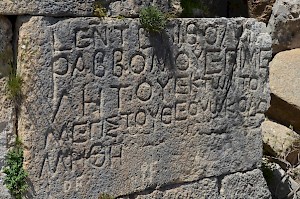Seleucid Era
Seleucid Era: dating system in the ancient world.

In May 311 BCE, Seleucus I Nicator captured Babylon during the Babylonian War, and demanded recognition for his reign, claiming to be the viceroy ("strategos of Asia") of Alexander IV, the son of Alexander the Great. The Babylonian cuneiform text known as Diadoch Chronicle records:
Seleucus spoke as follows: “Year 7 of Antigonus the general as year 6 of Alexander, son of Alexander and Seleucus the general you will count.”note
In other words, Seleucus jumped back one year and the epoch from which the years were counted was "our" year 312/311 BCE. This couning was continued by his son Antiochus I Soter and was still in use in the sixth century. Only after the publication of the Easter Tables of Dionysius Exiguus, the system was replace by the now common era.
There are two variants, indicated by scholars as SEB and SEM. The first one is according to the Babylonian calendar (New Year in the Spring), the other one to the Macedonian one (New Year in the Autumn).